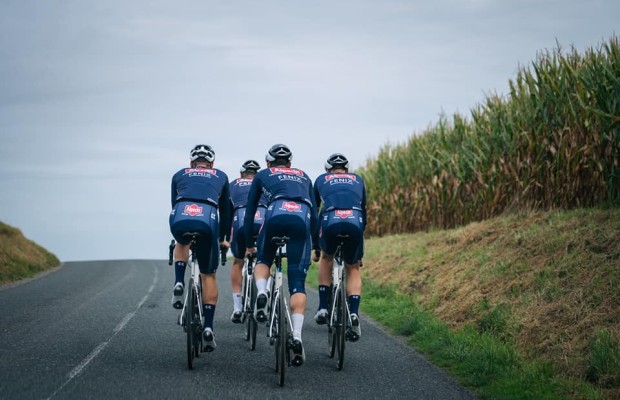Yellow cards arrive at La Vuelta a España
The last meeting of the UCI Management Committee held between June 10 and 12 introduced several changes in road racing in order to improve cyclist safety, measures that reflect the recommendations of the new SafeR organization that brings together representatives from all areas of cycling, an entity whose creation was promoted by Richard Plugge and Jim Ratcliffe, owners of Visma-Lease a Bike and INEOS Grenadiers respectively.

SafeR's proposals to improve safety are beginning to be taken into account by the UCI
A few months ago, a few days after the spectacular fall that has affected the preparation of some of the most relevant cyclists in the peloton, Richard Plugge, general manager of Visma-Lease a Bike, announced the creation of SafeR, an independent organization similar to the one existing in Formula 1 whose mission would be to promote measures that improve cyclist safety.
From the first batch of recommendations provided by SafeR, the UCI has just approved the incorporation of several measures that will be applied as a trial in upcoming races until the end of the season.
RECOMENDADO

Among the most striking measures is the implementation of a yellow card system that will begin to be used from August 1. A system that will affect not only cyclists but all members of the caravan: link motorcycles, media, team cars, assistants... and with which it is sought that all these people be more responsible and avoid behaviors that could endanger the safety of the race.
The race officials themselves will be responsible for issuing a yellow card to those who create dangerous situations, although we will not physically see them as in sports like football, but they will be communicated to the offenders at the time and will also appear in the final race report. In any case, this does not mean that the officials cannot continue to apply disqualification sanctions in cases already covered by the regulations, such as performing a prolonged car draft or holding onto it.
The UCI has established a series of sanctions for accumulation of yellow cards as follows.
- Two yellow cards in a race result in disqualification from the race and a 7-day suspension.
- Three yellow cards within a 30-day period will be sanctioned with a 14-day suspension.
- Six yellow cards within a 1-year period will result in a 30-day suspension.

In addition to the yellow card system, another measure that will be tested in some races yet to be defined affects the use of so-called earpieces. On the one hand, SafeR considers that these devices are a source of distraction for the cyclist and, on the other hand, the transmitter that is usually carried in a specific pocket located on the back is often dangerous in case of a fall. Among the measures that SafeR proposes to restrict their use are ideas such as only two cyclists per team wearing an earpiece and only they are responsible for communicating with their director and transmitting orders to the rest of the team.
Also as a trial, the UCI will allow race organizers to modify the protection zone in stages with a predicted sprint finish. Currently, this protection zone is set at 3 kilometers. With the new rule, it can be extended to 5 kilometers, always justified and communicated before the start of the race.
This measure aims to respond to an increasingly hostile urban infrastructure to the high speeds at which races are held and, with the growth of cities, covers a larger radius in relation to the areas where the finishes are located.

Furthermore, related to sprint finishes, the time calculation is modified so that the same time will be assigned as long as there is no difference between riders exceeding 3 seconds instead of the 1 second that was previously in place. This will only apply to cyclists in the main peloton of the race and aims to simplify time calculations in these stages and reduce pressure for cyclists not involved in the sprint, avoiding unnecessary risks to avoid losing time.
These measures are accompanied by the creation of the figure of SafeR Security Analysts who will be responsible for reviewing the measures adopted and identifying problematic areas of the route during races, establishing recommendations to avoid risks. A good example of this could be the modification of the finish at the Arenberg forest section that was introduced in the days leading up to the last edition of Paris-Roubaix. In addition, these Security Analysts will also review the practices and policies of teams in this area, both in competition and in training. Will this mean the end of cyclists constantly posting selfies on their bikes on social media? Let's hope so.





